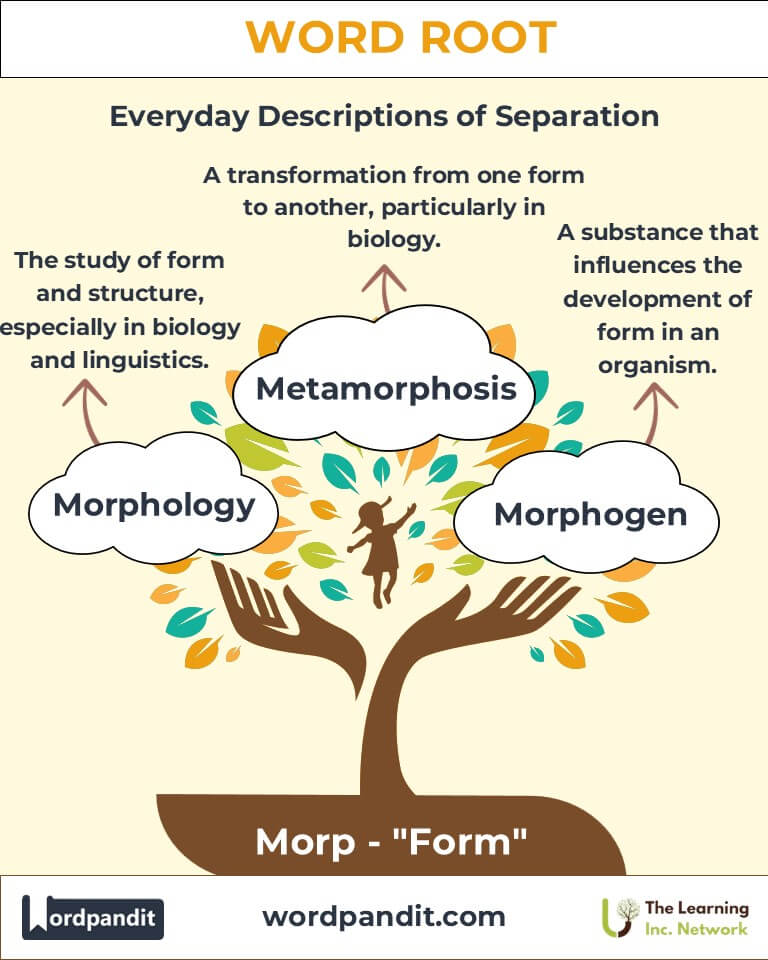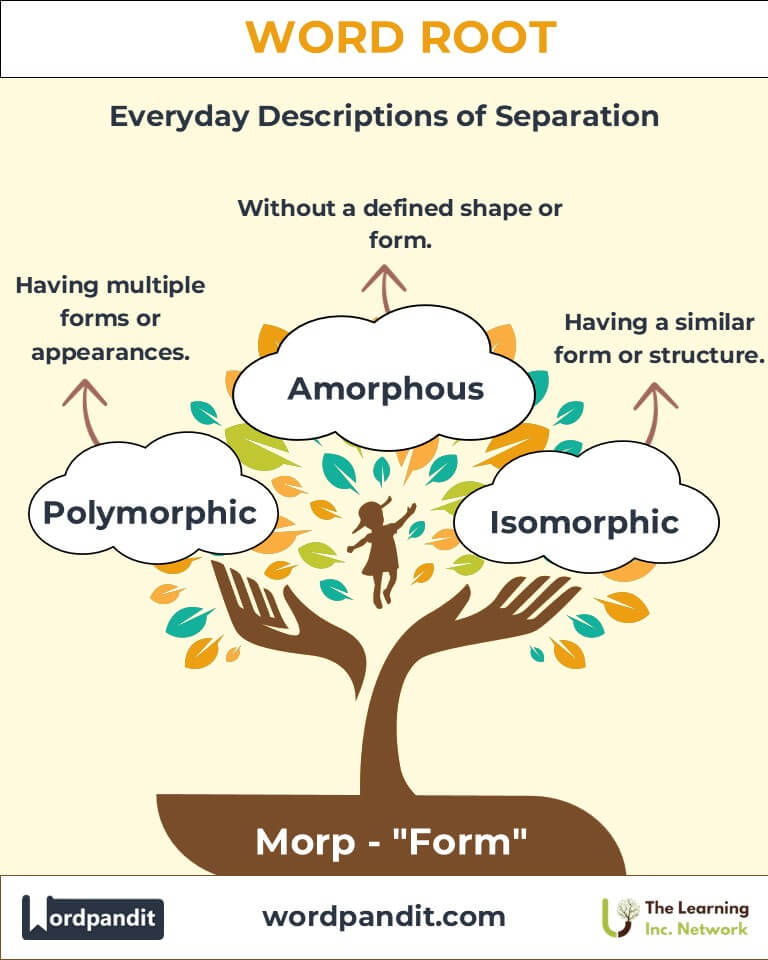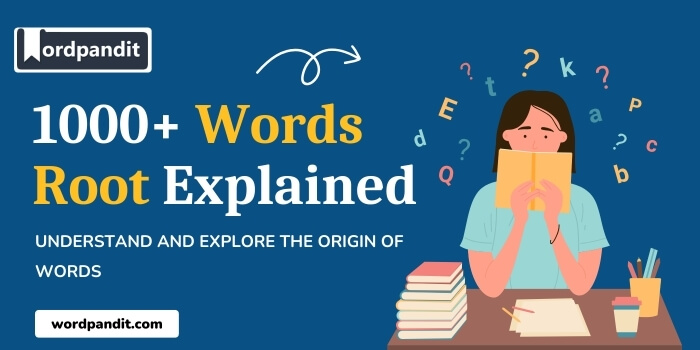Morp: The Foundation of Form in Language and Science
Byline: Discover how the root "morp," derived from Greek, meaning "form," shapes the language of biology, technology, and beyond. From terms like "morphology" to "polymorphic," this versatile root highlights the intrinsic role of form and transformation in understanding the world.

Table of Contents
- Introduction: The Meaning of Morp
- Etymology and Historical Journey
- Mnemonic: Remembering Morp
- Common Morp-Related Terms
- Morp Through Time
- Morp in Specialized Fields
- Illustrative Story: Morp in Action
- Cultural Significance of Morp
- The Morp Family Tree
- FAQs About the Morq Word Root
- Test Your Knowledge: morq Word Root Quiz
- Conclusion: The Living Legacy of Morp
Introduction: The Meaning of Morp
What connects the study of biological structures and the ever-changing nature of data in computing? The root "morp" (pronounced "morp") provides the answer. Derived from the Greek word morphē, meaning "form" or "shape," this root underscores terms across disciplines where form and transformation play pivotal roles. Words like morphology (the study of form) and polymorphic (existing in multiple forms) demonstrate how "morp" bridges biology, technology, and linguistics.

Etymology and Historical Journey
The root "morp" stems from the Greek morphē, directly translating to "form" or "shape." In ancient Greek philosophy, particularly in the works of Aristotle, "morphē" was central to understanding the material and immaterial aspects of objects. Over time, its applications broadened, entering Latin and eventually English, where it now enriches scientific, artistic, and literary vocabularies.
Mnemonic: Remembering Morp
To remember "morp," visualize a caterpillar transforming into a butterfly. This vivid image captures the essence of "form" and "change," key ideas behind the root.
Mnemonic Device: "Morp means form—like how a caterpillar morphs into a butterfly."
Common Morp-Related Terms
- Morphology (mor-FOL-uh-jee): The study of form and structure, especially in biology and linguistics.
Example: "The morphology of leaves varies significantly across plant species." - Polymorphic (pol-ee-MOR-fik): Having multiple forms or appearances.
Example: "Polymorphic viruses adapt their structure to evade detection by software." - Amorphous (ay-MOR-fus): Without a defined shape or form.
Example: "The amorphous clouds shifted constantly in the sky." - Metamorphosis (met-uh-MOR-fuh-sis): A transformation from one form to another, particularly in biology.
Example: "The metamorphosis of a tadpole into a frog is a fascinating process." - Isomorphic (eye-so-MOR-fik): Having a similar form or structure.
Example: "The isomorphic crystals in the mineral sample were identical in shape." - Morphogen (MOR-foh-jen): A substance that influences the development of form in an organism.
Example: "Morphogens play a critical role in shaping embryonic development."
Morp Through Time
- Metamorphosis (Ancient to Modern): Once used solely in mythology to describe fantastical transformations, it now describes biological changes like a caterpillar turning into a butterfly.
- Amorphous (Scientific Evolution): Initially used to describe physical shapes, its meaning expanded to abstract contexts, like "amorphous ideas," reflecting a lack of structure or clarity.
Morp in Specialized Fields
- Biology: Morphology is critical in understanding the form and structure of organisms.
Example: Comparative morphology helps scientists trace evolutionary relationships. - Technology and Computing: Polymorphic viruses are malware capable of changing their code to avoid detection.
Significance: Highlights the root’s relevance in cybersecurity. - Chemistry: Amorphous solids are materials lacking a clear crystalline structure, like glass.
Application: Essential in materials science and engineering. - Linguistics: A morph is the smallest unit of meaning in linguistic morphology.
Example: Understanding morphs helps decode word structures in languages.
Illustrative Story: Morp in Action
Dr. Lina Patel, a biologist, was researching the metamorphosis of amphibians. Her studies in morphology revealed unique adaptations in frog populations that allowed them to thrive in polluted waters. Meanwhile, her brother Raj, a software engineer, battled polymorphic viruses while developing an AI-driven antivirus system. Their shared fascination with transformation and form—biological and digital—demonstrated the profound versatility of the root "morp."
Cultural Significance of Morp
The concept of form and transformation captured by "morp" resonates across cultures. In Greek mythology, gods frequently underwent metamorphoses to interact with mortals. Today, metaphors of "morphing" symbolize personal growth, adaptation, and innovation in art and literature.

The Morp Family Tree
- Meta- (Greek: "change")
Metamorphosis: Transformation in form or nature. - Iso- (Greek: "equal")
Isomorphic: Having the same form or structure. - A- (Greek: "without")
Amorphous: Without a defined shape or form. - Poli- (Greek: "many")
Polymorphic: Existing in multiple forms.

FAQs About the "Morp" Root
Q: What does the root "morp" mean?
A: The root "morp" originates from the Greek word "morphē," meaning "form" or "shape." It is used to describe anything related to structure, appearance, or transformation. For instance, words like "morphology" study forms and structures in biology and linguistics.
Q: What is morphology?
A: Morphology is the study of the structure and form of things. In biology, it focuses on the physical form and structure of organisms, while in linguistics, it examines how words are formed and their meaningful components.
Q: What does "polymorphic" mean?
A: Polymorphic means "having multiple forms." In biology, it refers to organisms or genes that can exist in different forms. In technology, polymorphic viruses are those that change their structure to evade detection.
Q: What does "amorphous" signify?
A: "Amorphous" means "without a clear or defined shape." It is often used in science, such as to describe materials like glass that lack a crystalline structure, but can also describe abstract concepts like "amorphous ideas," meaning ideas that lack clarity.
Q: How is "morp" relevant in technology?
A: The root is used in terms like "polymorphic viruses," which are malicious programs capable of changing their structure to bypass security systems. This demonstrates the application of "form" in digital transformations.
Q: What is the difference between "metamorphosis" and "polymorphic"?
A: "Metamorphosis" refers to a dramatic transformation from one form to another, such as a caterpillar becoming a butterfly. "Polymorphic," on the other hand, describes the existence of multiple forms simultaneously or over time, like a gene with multiple variations.
Q: Why is the study of morphology important?
A: In biology, morphology helps scientists understand the relationship between the structure and function of organisms, aiding in evolutionary studies. In linguistics, it explains how words are formed, helping us decode language patterns and origins.
Q: What is an example of "morp" in literature?
A: The idea of "metamorphosis" frequently appears in literature. For example, Franz Kafka’s novella "The Metamorphosis" explores transformation metaphorically as the protagonist turns into an insect.
Test Your Knowledge: Morp Mastery Quiz
1. What does the root "morp" signify?
2. Which term describes the existence of multiple forms?
3. What is "metamorphosis"?
4. Which word refers to something lacking a clear shape?
5. Which field commonly uses the term "morphology"?
Conclusion: The Living Legacy of Morp
The root "morp" emphasizes the universal importance of form and transformation, from biology to technology. By understanding its applications, we gain insights into how forms evolve and adapt, echoing life's dynamic nature. As science and language evolve, the legacy of "morp" continues to shape our understanding of the world.












